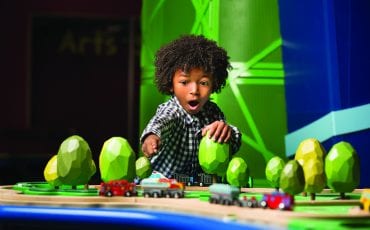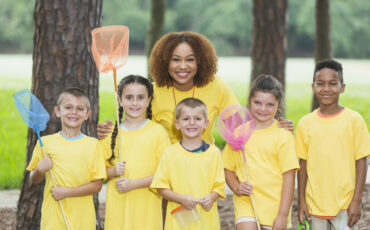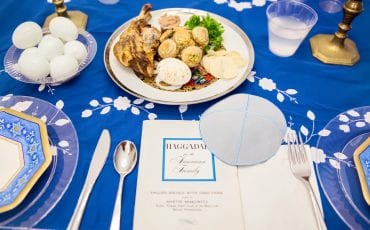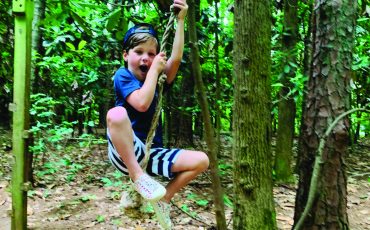25 Ways to Make Math Fun

Do you dread hearing “I hate math!” this school year? While math may seem boring or challenging to some children, research shows most students can succeed at high levels in math and enjoy it. Here’s how to show that math can be interesting and fun.
Use measuring and fraction skills when you bake or cook with your children, to show the relevance of math in their everyday life.
At the grocery, have your child figure out how many pounds of produce to get without going over a certain dollar amount. For example, say “Please weigh and bring me $3 worth of Granny Smith apples.”
Study and graph weather. Make bar graphs, circle graphs or pictographs for sunny, rainy, cloudy or snowy days. Find the mean, median, range and mode for the high and low temperatures each month.
Research cool careers that use math – architect, astronaut, fashion designer, forensic analyst and computer programmer.
Learn about the lives of famous mathematicians and what they accomplished (for instance, Albert Einstein, Isaac Newton and John Nash, from “A Beautiful Mind.”)
Let your child plan a special dinner. Then give him a budget to shop for the ingredients, not going over the budget.
Volunteer in your child’s math class. You will find out what your child is learning, the teacher’s expectations and how to better help your child at home.
If your child is struggling in math, ask your child’s teacher to help identify problem areas and recommend a tutor, or call the math department at your local university to find math majors willing to tutor.
Plan a trip together, calculate the miles you will travel at a designated speed. Decide how long it will take to get there.
Give your child an allowance to manage. Together decide how much they will save, spend and give away.
If your child is a teen with a job, help them write a budget and open a savings account.
When shopping for a new toy, backpack or school supply, look at sale flyers from several stores. Have your child find which store has the best bargain for the item they want.
Play store with young children. Let them pick out toys and household items and put price tags on them. Then give them money to practice counting out to you to pay for the items.
Read math picture books like “The Greedy Triangle,” “The Grapes of Math,” “The Doorbell Rang,” “The Very Hungry Caterpillar” or “How Big is a Foot?”
Have your tween or teen pick out the make, model and year of a car they would like to buy when they are 18. Look up the value of the car and figure out how much they will have to earn every week until they are 18 to buy the car.
Walk around your house and find examples of parallel and perpendicular lines in doorways, walls, furniture and more.
Find various geometric shapes around your house and yard. Draw or take photographs and label the shapes and what they comprise (for instance, the roof, the mailbox, the deck railing) and make your own version of a book like Tana Hoban’s “Shapes, Shapes, Shapes.”
Have daily countdowns to special events, or do a ___ shopping days until Christmas.
Challenge both genders in math. Don’t promote gender stereotypes that suggest boys are better at math and girls are better at reading. Research shows that while girls do well in math in middle school and high school, women are underrepresented in post graduate STEM (science, technology, engineering and math) jobs.
Play card games that involve math (for example Uno and Crazy Eights).
Make up a word problem of the day every day and have your child solve it. Keep it fun and funny.
Cut food into fractional parts and talk about it. Use the food fractions to introduce equivalent fractions.
Take a tour of your local bank. Talk to your child about words like loan, interest and principal.
Celebrate Pi day and talk about what it means and why it is important. Make your child’s favorite pie.
Keep math resources on hand. Math tools like rulers, seamstress tapes, tangrams, pattern blocks, play money, fraction bars, counters and geometric shapes are great for kids to make discoveries with while playing. Also, keep a good math dictionary on your bookshelf to help with terms you may have forgotten.
– Janeen Lewis
Fun Math Apps:
Preschool
- Moose Math by Duck Duck Moose: Includes games that teach counting, addition and subtraction.
- Drive About Number Neighborhood: Kids travel through a seaside neighborhood and stop at different shops. Each shop has a different math game.
- Sudoku Junior: Sudoku puzzles for beginners, but can challenge players of all ages.
Elementary School
- Peter Pig’s Money Counter: By Visa, this app teaches students to identify, count and save money. Includes fun facts about U.S. currency.
- Marble Math Junior: Students solve math problems as they roll their marbles through mazes.
- Mathmateer: Students do math to earn money to build virtual rockets.
- Chicken Coop Fractions: Helps children develop strategies for solving problems involving fractions.
- Lobster Diver: This app is a game that involves scuba diving off the coast of Maine for lobster traps. Addresses number and operation standards established by the National Council of Teachers of Mathematics.
Middle/High School
- Unit Converter: This app converts currency, data, energy, power or temperature.
- Math Ref: Helps find formulas across multiple disciplines, but focuses on algebra, geometry and calculus.
- WolframAlpha: Finds formulas, gives graphic representations and shows how to get solutions to math problems.
- Meta Calculator: A graphing, scientific, matrix and statistics calculator app, this will help in those challenging upper level math classes.
- Khan Academy: Detailed lessons and practice for learners in early math through Calculus.







